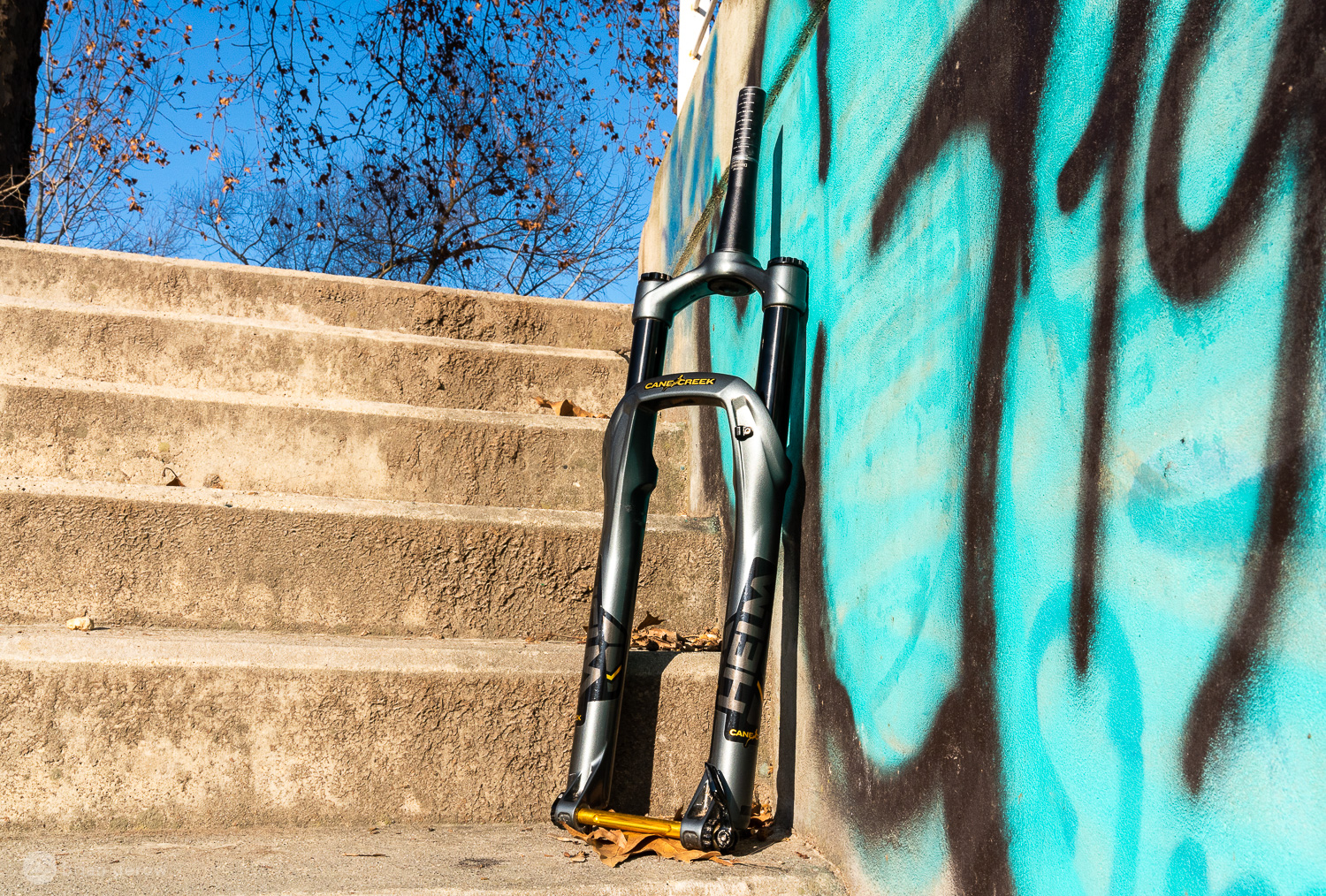
Some horses are bred for racing, while others have been trained to carry heavy loads and plow fields. If the Helm Air fork were a steed, it would cover the spectrum from full-throttle-fast to fully-loaded-adventure. Having ridden bikes with Cane Creek headsets for years now, while salivating over their DBcoil shocks, I was pumped when they released the 29″ version of the Helm Air Fork. Its sleek automotive paint aesthetic that envelopes some of the most user-friendly adjustment features on the market had me eager to test one out. I am a sucker for components that are designed with home mechanics in mind.
The Helm is peppered with well thought out bits that I will dig into below, but there are some extra elements worth mentioning. There are measurements printed along the steerer to help dial in the precise cut, a series of holes along the backside of the bridge to bolt a fender to, and the D-Loc axle offers a threadless way to secure the front wheel. Riders who don’t like the D-Loc can replace it with a classic bolt-on axle.
Setup
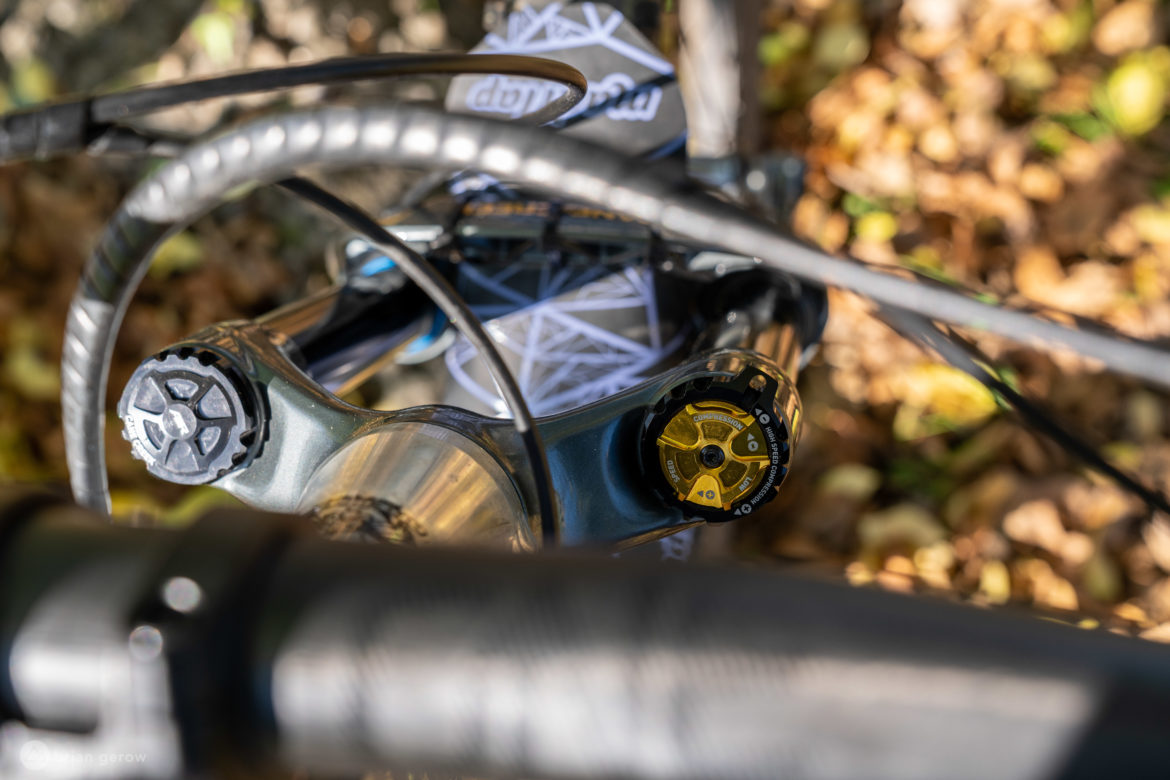
Starting off with the air spring, the Helm can be dialed in as precisely or quickly as riders prefer. For the “set it and forget it” crowd, simply pump the positive chamber pressure to equal half of your weight in pounds. I weight nearly 155lbs with riding gear on, so I started with 78psi. Once the positive chamber is full, remove the cap on the lower leg and depress the “negative air chamber equalizer” button to allow the air to fill the lower chamber. From there, set sag as usual by increasing or decreasing the pressure. Cane Creek recommends a measurement between 15 and 25% sag for the Helm.
For y’all who love to fiddle and tinker until things are just so, the independent positive and negative air chambers will be a delightful way to play with the fork’s overall sensitivity. For example, if you want the Helm to ride more softly through the first third of its travel, pump it a few PSI past your predetermined sag number, equalize the chambers, and then let off those few extra digits from the main chamber with your pump’s release valve. Leaving a touch more air in the negative chamber will help it glide through the first centimeters of squish like Falkore through a child’s dreams.

I like my fork to feel as supportive as possible, so I found the 15% sag point and kept the factory air balance. I have lowered the air pressure about 4psi since our ambient temperature dropped closer to the freezing point, as I would do with any air fork.
The only other adjustment I made to the air spring was to reduce the overall air volume after a few rides, making the fork more progressive and preventing bottom outs. Air volume adjustments on the Helm are about as simple as they come. Cane Creek has a handy video that explains the process in clear detail. Simply depressurize the fork, remove the air volume assembly, click the piston into a slot that allows for more or less air volume, tighten everything back up, and re-pressurize. There’s no need to lug around a bag of volume spacers as all of the adjustments are held inside the fork, similar to MRP’s ramp control.
| Price | $899 (€799) Available at JensonUSA, Competitive Cyclist, and other retailers. |
| Travel | 100-160mm, internally adjustable |
| Actual weight | 2025g (29er version with 190mm cut steerer and some dirt) |
| Offset options | 44 or 51mm for 29″. 44mm for 27.5″. |
| Compression | LSC 11 clicks of adjustment, HSC 16 clicks |
| Rebound | 10 clicks of adjustment |
| Air volume | 8-position internal index adjustment |
| Stanchion diameter | 35mm |
| Brake mount | 180mm post |

From there, I set up the compression and rebound to best fit the characteristics of the spring. I ended up running the rebound two clicks past the midpoint and found it plenty fast for poppy riding. Folks who like a fast fork will certainly have all of the pogo sensations they desire with the Helm wound further open.
I added low-speed compression until the brake dive was at an acceptable level, and rode with the high-speed damping 2-3 clicks from fully open on most trails. From DH tracks in San Romolo to the janky trails that make up my lunch loops, this fork was quick and easy to adjust for terrain and weather conditions.
The Helm’s final tinker potential, which I have yet to try, allows the travel to be adjusted internally between 100 and 160mm, in 10mm increments. The process reportedly takes about 5 minutes. I will mount it on a 150mm hardtail this spring and will add any interesting details from that procedure.
Bump munching
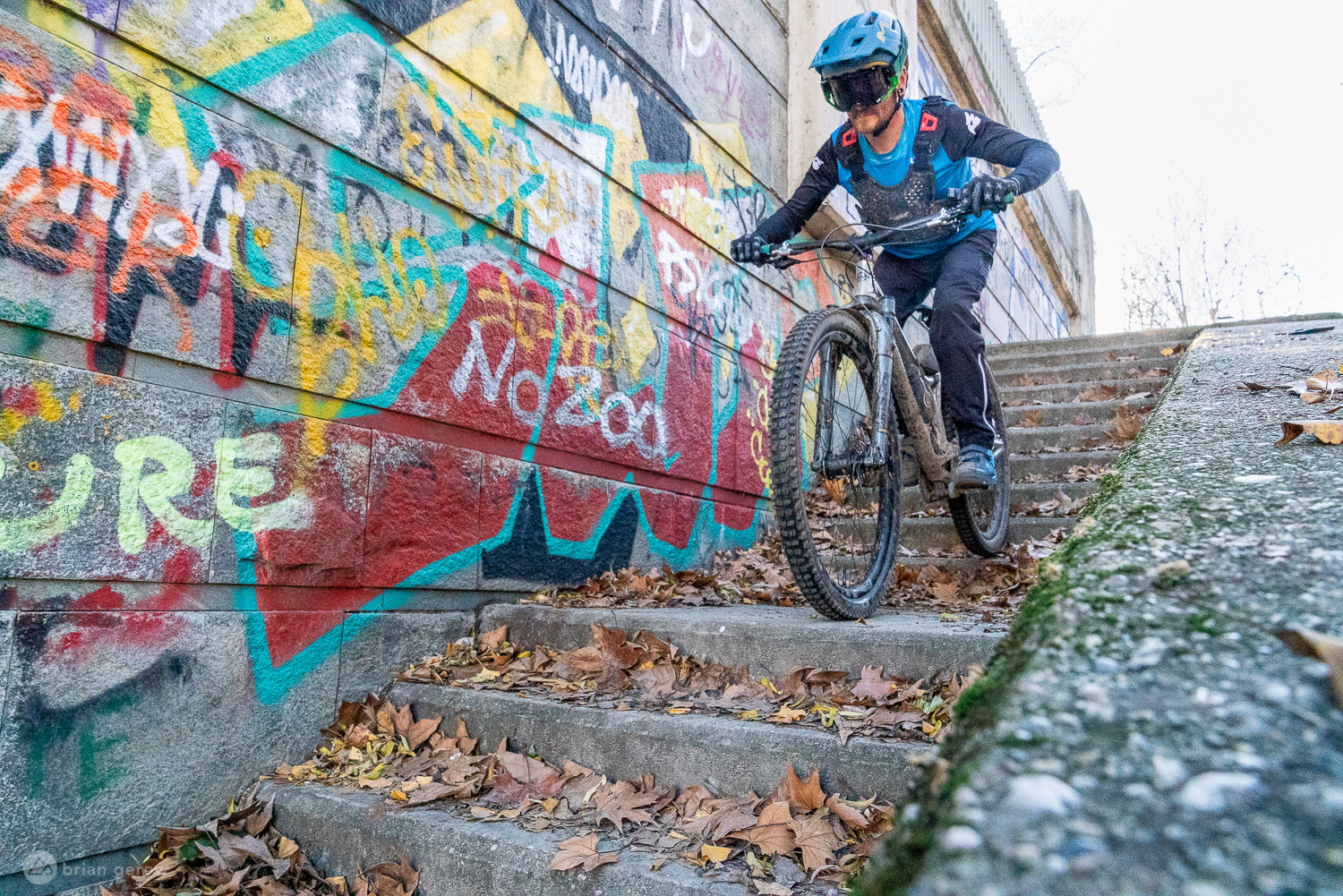
Out of the box, the Helm felt good on my local trails. I was able to dial in plenty of midstroke support without sacrificing traction, and the stock air chamber balancing felt fantastic for my riding style. I didn’t notice any real break-in period, as the seals felt smooth and supple from the first ride. I have yet to line up for a race with it, but I look forward to doing so once spring rolls around. Unlike some suspension products, the Helm’s performance grows as the trail gets messier. I will be happy to push it to my limit, knowing that it’s got my back.
On a recent trip south to San Romolo, Italy, I decided to add some oomph to the fork. I had been using all of the travel while riding in Finale and on my local tracks, and I knew the trails in San Romolo to be decidedly rougher. I didn’t experience any spooky “clang” or other alarming signals when I managed to bottom out the fork. I simply noticed that the blue fun-meter was resting against the crown, so I figured I should reduce the air volume a bit. With another click of volume reduction, the bottom outs have largely ceased, and the fork stays higher in its travel through successive stone bouts.

When I say that the Helm is “supportive” there are a few descriptive words missing. Some supportive suspension products serve their resistance energy in a way that feels stilted, or segmented. This fork feels fluid, offering a progressive push-back that ramps up evenly and forgettably. This is a fork that you can truly set and forget if you like, and it will provide the traction and damping you need all day long.
Given that the fork’s weight is nearly identical to many of its top contenders, I expected it to be as stiff as any of them. With 35mm stanchions, and a brawny bridge (or arch if you please), it looks like a better-painted tank. Fortunately, it rides far better than a tank, and it feels just as stiff as any deluxe, long-travel fork you can buy today.
I’m not the heaviest rider, so I try to test fork stiffness via hard braking and exaggerated turns on asphalt. My usual armchair examination revealed little fore/aft flex under full braking power, and no noticeable flex with the bars turned. This fork is built to withstand weight and strength far greater than mine. The company doesn’t list a max rider weight on their site, but the upper end of the scale is likely limited by the air pressure before chassis stiffness.
Final thought
While searching for some aspect of this fork to complain about I realized that there are very few companies making fenders that fit its bolt pattern. Syncros is the only one I know of. So, there you have it. Dear Cane Creek, please make a fender that attaches to the fork properly so that I don’t have to wrap it in zip ties.
Apart from the fender situation, this fork handily deserves its place next to the RockShox Lyrik, Fox 36, Formula Selva R, and other squishers that are punching in a similar weight class. For enduro racers and long-travel enthusiasts alike, the Helm is ready to be tuned into your action. Will we see a 170mm+ version soon? Only time will tell.
⭐️ Find the Cane Creek Helm fork at JensonUSA, Competitive Cyclist, and other retailers.
Thank to Cane Creek for providing the Helm for testing and review.






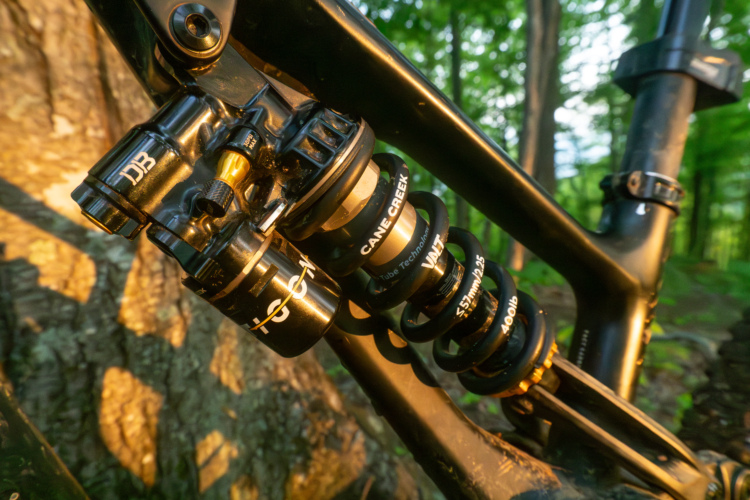

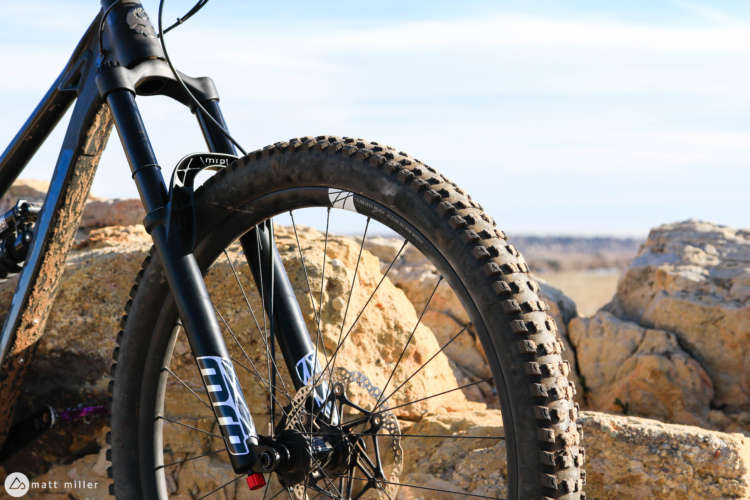





1 Comments
Jan 11, 2020
Also I love how beautifully machined all the parts are, the air volume adjust is a work of art!